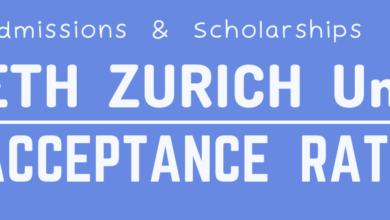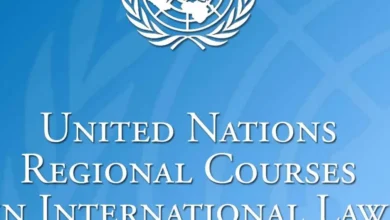How to Qualify for National Merit Scholarship (10 Essential Tips)
Are you searching for how to qualify for National Merit Scholarship? If yes, you are in the right place!
Securing a National Merit Scholarship is a prestigious achievement that recognizes academic excellence among high school students.
To qualify for this coveted scholarship, you must excel in the Preliminary SAT/National Merit Scholarship Qualifying Test (PSAT/NMSQT) during your junior year.
This comprehensive guide explores the key steps and criteria for aspiring candidates.
From understanding the PSAT/NMSQT scoring system to navigating the rigorous selection process, this guide provides essential insights into what it takes to become a National Merit Scholar.
Also Read:
- After Studying Biochemistry what next? What to expect from a biochemistry degree
- Is a History Degree Useless? (All You Should Know)
What Is National Merit Scholarship?
The National Merit Scholarship Program is a prestigious academic competition in the United States.
It identifies and recognizes high school students who demonstrate exceptional academic ability and potential for success in college.
The program is run by the National Merit Scholarship Corporation (NMSC), a non-profit organization.
The competition begins with the Preliminary SAT/National Merit Scholarship Qualifying Test (PSAT/NMSQT), which students typically take during their junior year of high school.
The scores on this test are used to determine eligibility for recognition and scholarships.
There are several stages in the National Merit Scholarship Program:
- PSAT/NMSQT: Students take this test, and the scores are used to determine eligibility for recognition.
- Commended Students: Based on their PSAT/NMSQT scores, some students are recognized as Commended Students. While they do not continue in the competition for scholarships, being a Commended Student is an honor in itself.
- Semifinalists: The highest-scoring students in each state are named Semifinalists. They are the top scorers in their respective states and represent the top percentage of test-takers nationwide.
- Finalists: Semifinalists submit additional information, including a detailed scholarship application, to become Finalists. From the Finalist group, scholarship winners are selected.
- Scholarship Winners: A select number of students are chosen as National Merit Scholars and receive scholarship awards. These awards can be used at accredited U.S. colleges and universities.
Participating in the National Merit Scholarship Program is not only an academic achievement but can also lead to scholarship opportunities that help students pursue higher education.
The program is highly competitive, and being named a National Merit Scholar is considered a significant accomplishment.
How to Qualify for National Merit Scholarship
The National Merit Scholarship Program is a highly competitive and prestigious academic competition that recognizes outstanding high school students.
Qualifying for this scholarship involves excelling in the Preliminary SAT/National Merit Scholarship Qualifying Test (PSAT/NMSQT) and navigating a rigorous selection process.
Here are 10 essential tips to increase your chances of qualifying for the National Merit Scholarship:
1. Start Early and Prepare Diligently
Success in the National Merit Scholarship Program begins with early preparation.
Start honing your academic skills well before the PSAT/NMSQT.
Familiarize yourself with the test format, content, and time constraints.
Consider taking practice tests to identify areas for improvement and develop effective study strategies.
2. Understand the PSAT/NMSQT
The PSAT/NMSQT is the gateway to the National Merit Scholarship Program.
Understand the test structure, including the sections on Critical Reading, Mathematics, and Writing.
Focus on strengthening your skills in these areas, as your performance on the PSAT/NMSQT is a crucial factor in determining eligibility for the scholarship program.
3. Prioritize Strong Academic Performance
While the PSAT/NMSQT is a significant component, your overall academic record is also considered.
National Merit Scholarship eligibility often requires a strong GPA.
Prioritize your studies, maintain high grades, and challenge yourself with advanced coursework.
A solid academic foundation enhances your overall candidacy for the scholarship.
4. Take Challenging Courses
Enroll in advanced or honors courses to demonstrate your academic prowess.
National Merit Scholarship selectors value candidates who have taken challenging courses and excelled in them.
This not only showcases your intellectual capabilities but also indicates your commitment to academic excellence.
5. Strategically Approach the PSAT/NMSQT
Develop a strategic approach to the PSAT/NMSQT.
Familiarize yourself with the test format and allocate your time wisely during the exam.
Focus on accuracy, as the test penalizes incorrect answers.
Work on pacing to ensure you can complete each section within the allotted time.
Practice time management techniques during your preparation.
Also Read:
6. Review and Learn from PSAT/NMSQT Results
After taking the PSAT/NMSQT, thoroughly review your results. Identify areas of strength and weakness.
Use this information to tailor your preparation for subsequent attempts.
Understanding your performance can help you target specific areas for improvement and enhance your overall test-taking skills.
7. Strive for Commended Student Status
Even if you don’t become a Semifinalist, achieving Commended Student status is an honorable recognition.
Commended Students are those who score well on the PSAT/NMSQT but may not qualify for Semifinalist status.
This recognition is valuable and can be included in college applications.
8. Cultivate Well-Roundedness
While academic achievement is paramount, National Merit Scholarship selectors also appreciate well-rounded individuals.
Engage in extracurricular activities, community service, and leadership roles.
Demonstrate your passion and commitment to activities beyond academics, showcasing a balanced and multifaceted personality.
9. Craft a Strong Application
If you advance to the Semifinalist stage, take the scholarship application process seriously.
Provide thorough and thoughtful responses to essay prompts and questions.
Highlight not only your academic achievements but also your extracurricular involvement, leadership experiences, and personal qualities that set you apart.
10. Prepare for the Finalist Interview
If selected as a Finalist, you may be required to undergo an interview.
Prepare for this by researching common interview questions, practicing your responses, and honing your communication skills.
Be ready to discuss your academic achievements, goals, and experiences compellingly and articulately.
Qualifying for the National Merit Scholarship is a challenging yet rewarding process that requires a combination of academic excellence, strategic preparation, and a well-rounded approach to personal development.
By starting early, understanding the test, prioritizing academic performance, and demonstrating well-roundedness, you can enhance your chances of standing out in this competitive scholarship program.
The National Merit Scholarship not only recognizes your achievements but also opens doors to educational opportunities and financial support for your college journey.
Frequently Asked Questions (FAQ)
What PSAT Score Do You Need to Qualify for National Merit?
The qualifying PSAT score for the National Merit Scholarship Program varies each year and by state.
The selection process designates students as Semifinalists based on their Selection Index, derived from the PSAT/NMSQT score.
In recent years, Semifinalist cutoff scores have ranged from around 200 to 220.
However, these scores are not a fixed requirement and are subject to change annually.
Achieving a high PSAT score is crucial, and being named a Semifinalist is a significant step toward National Merit Scholarship eligibility, leading to further consideration and the potential to receive this prestigious academic honor.
How Is National Merit Score Calculated?
The National Merit Selection Index, determining eligibility for the scholarship program, is derived from the PSAT/NMSQT score.
The PSAT has three sections: Evidence-Based Reading and Writing (EBRW), Mathematics, and a total score.
The Selection Index is calculated by doubling the sum of the EBRW and Math section scores.
This results in scores ranging from 48 to 228. Semifinalists are identified based on these indexes, with state-specific cutoffs varying annually.
The process underscores the significance of excelling in both verbal and mathematical skills, reflecting the National Merit Scholarship Program’s emphasis on comprehensive academic excellence.
How Many Times Can You Take the PSAT?
Typically, students can take the PSAT/NMSQT once per year during their high school career.
The test is commonly administered in October, and many students choose to take it in both their sophomore and junior years.
While there’s no official limit on attempts, it’s essential to recognize that the PSAT is specifically designed for these grade levels.
Taking the test multiple times allows you to track progress, identify areas for improvement, and enhance your chances of achieving a high score for National Merit Scholarship consideration.
What Is the Difference Between PSAT and SAT?
The PSAT (Preliminary SAT) and SAT (Scholastic Assessment Test) share similarities but serve different purposes.
The PSAT is a practice test taken by high school students, often in their sophomore and junior years, providing insights into the SAT format.
It also serves as the qualifying test for the National Merit Scholarship Program.
Conversely, the SAT is a college admissions exam used by colleges and universities to assess a student’s readiness for higher education.
While both exams measure math and evidence-based reading and writing skills, the SAT is longer, includes an optional essay, and holds greater weight in the college admissions process.
When Should I Start Studying for the PSAT?
To maximize preparation for the PSAT, it’s advisable to start studying in the months leading up to the test, typically during the summer and early fall of your sophomore or junior year of high school.
Begin with an assessment of your strengths and weaknesses, utilize official practice materials, and consider enrolling in preparatory courses if needed.
Early preparation allows you to familiarize yourself with the test format, develop effective study strategies, and build confidence.
Starting several months before the exam provides ample time for consistent practice, helping you achieve your best performance on the PSAT.
Conclusion
Qualifying for the National Merit Scholarship is a multifaceted journey that demands strategic preparation, academic dedication, and a commitment to excellence.
Starting early, understanding the PSAT/NMSQT intricacies, and maintaining a strong academic record form the foundation for success.
By excelling in the PSAT, demonstrating well-roundedness through extracurricular engagement, and crafting a compelling application, you can position yourself for recognition in this prestigious scholarship program.
The National Merit Scholarship not only celebrates academic achievement but also opens doors to educational opportunities and financial support.
Through diligence, perseverance, and a comprehensive approach to personal development, you can navigate the competitive landscape and potentially join the esteemed ranks of National Merit Scholars, embarking on a path toward a bright and promising future in higher education.
Related Posts:
- How to Become a Commercial Pilot without a Degree
- How to Become a Teacher in Texas without a Degree
- How to Become a Writer without a Degree
- Can You Be a Social Worker with a Psychology Degree?
- Is a Psychology Degree Useless? (All You Should Know)






